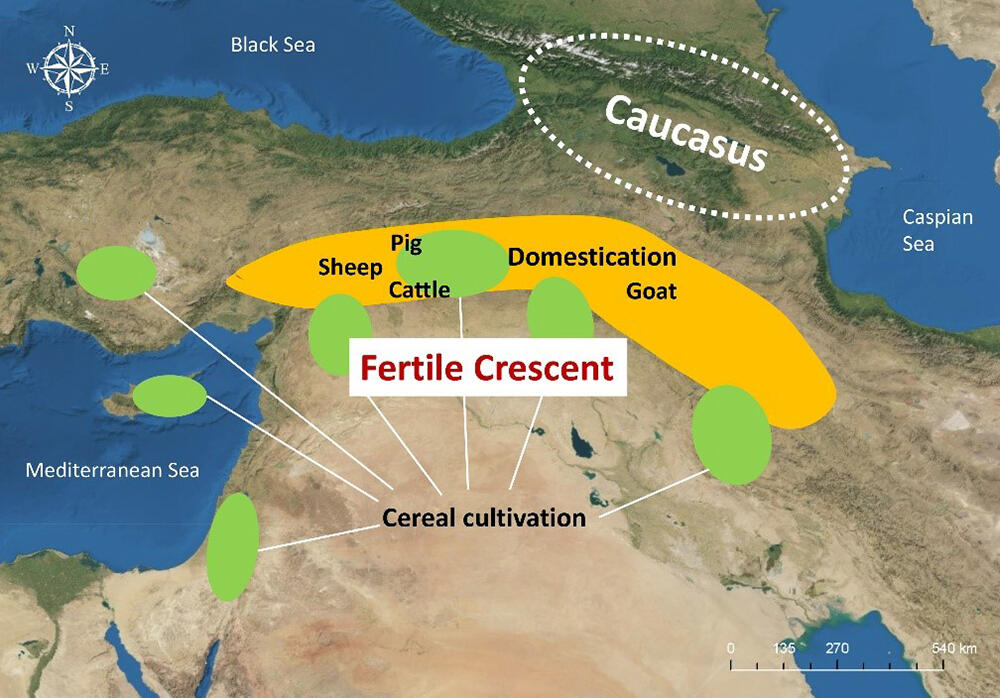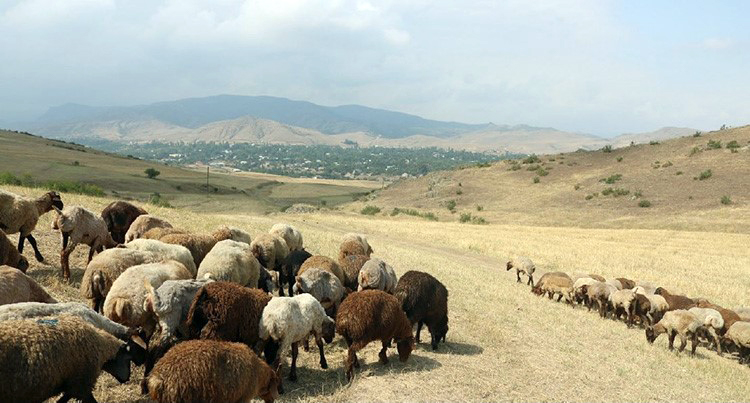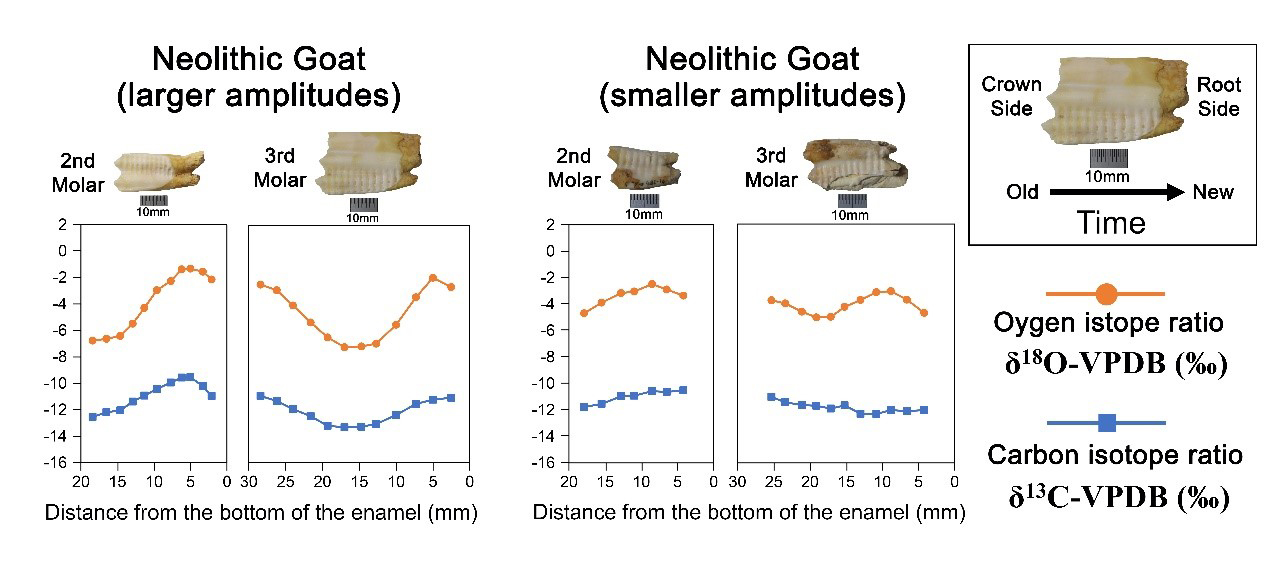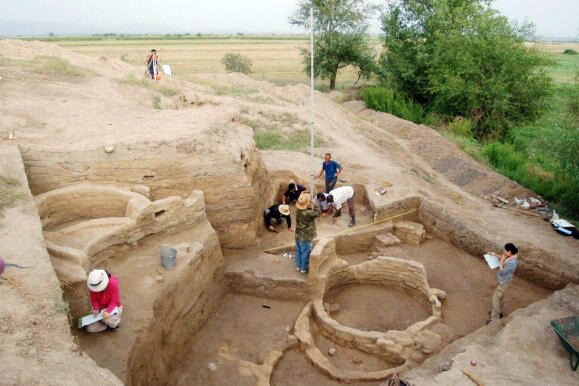Crop farming and livestock farming support the dietary needs of us modern people, and we take them for granted. The origin of these practices is said to lie in Western Asia around 10,000 years ago. Still, allegedly, we have yet to clarify many details concerning the circumstances and processes through which farming spread worldwide. In this context, an international research group that includes Nagoya University announced that they had made some discoveries. The group had carried out isotope analysis on the teeth of livestock excavated in the northern Caucasus region. The study shows that 7,500-8,000 years ago, during the earliest period when livestock farming was spreading to other areas, people were not only grazing their livestock but applying methods such as transhumance, the movement of livestock between seasons, and feeding. We can say that this is a significant result as we draw nearer to understanding the reasons for humanity's remarkable shift from a hunter-gatherer lifestyle.
"It's not just the origin; the way it spread is important too"
Since our birth, humans had spent most of the 7 million years living as hunter-gatherers. However, around 10,000 years ago, Earth entered a relatively warm interglacial period, and we began farming crops and livestock. That spread around the world and has led us to the present day. We know that farming originated in Western Asia in a region known as the "Fertile Crescent." Then the cultivation of wheat and beans and the livestock farming of goats, sheep, cattle, and pigs spread to other regions.

Seiji Kadowaki, an archaeology lecturer at Nagoya University Museum, notes, "Research on the Crescent is progressing. However, although the origin of a technique is important, it is the spread that will bring change to the world. How was it later adopted into other environments, including Japan, rather than remaining a local phenomenon, and how did it change people's lives? The process behind the spread is equally important."
Thus, Kadowaki and his research group focused primarily on livestock farming. First, they investigated Göytepe and Hacı Elamxanlı Tepe (in present-day Azerbaijan), the oldest rural sites in the Southern Caucasus adjacent to the north side of the Crescent, where livestock was introduced 2,000-3,000 years later than its origin. Then, they scraped the tooth enamel from a total of 12 goats, sheep, and cattle excavated from these sites in order of formation and analyzed the carbon and oxygen isotope ratios to investigate seasonal variation.

Tooth enamel is formed from the crown side to the root side and never reformed. The seasonal variation, which reflects the isotope ratio of the water and foods consumed by livestock, is recorded here. When water evaporates, it is easier for molecules containing lighter oxygen isotopes to disappear, and so the oxygen isotope ratio of water changes depending on the season. Moreover, the carbon isotope ratio in plants changes according to the aridity, which, in turn, changes the carbon isotope ratio in the bodies of the animals that eat the plants. For example, livestock that spent their winters in the lowlands and their summers in the wet and cool highlands are thought to have smaller amplitudes in carbon and oxygen isotope ratios. This analysis method had already existed overseas, but the research group improved research quality by examining two teeth per livestock or making comparisons with modern-day livestock.
Transhumance and feeding became evident

As a result of the analysis, the group found smaller seasonal amplitudes in the isotope ratios among particular goats. If there were large amplitudes, the animals would have been subject to significant seasonal influences and it would be possible to infer that they only grazed on the lowlands around the sites. However, some goats showed smaller amplitudes, which means they moved to the highlands in the summer, indicating the possibility of transhumance. Although transhumance is labor-intensive, it has the advantage of relieving the burden on lowland pastures and providing livestock with fresh grass. There were also individuals with little change in the carbon isotope ratio, suggesting that they had been fed. Moreover, the group obtained data from which we can learn sheep were getting food, and cattle were doing transhumance.

(Provided by Nagoya University)
The research group concluded based on this data that it is conceivable that seasonal transhumance and feeding (e.g., with stored dry grass) were taking place, and multiple pastoral techniques were used in the Caucasus region from the earliest period when livestock farming reached the area.
Kadowaki explains, "In the Crescent, livestock farming techniques developed little by little, but after these diversified, they spread to the Caucasus region all at once--this is the diffusion process we can see. Therefore, it is conceivable that by adopting multiple rearing techniques, people could reduce the risks. Furthermore, some studies show that livestock farming also spread to Europe during this same period."
Many obsidian tools were found in the early farming villages of the Caucasus region, which couldn't have been made there. There was a view that cattle had carried them from their place of origin, which is about 200 kilometers away, and the study's outcomes made it clear that cattle had been migrating.
Indicators for the future of humanity
Masato Hirose, a third-year doctoral student under Dr. Kadowaki at the Nagoya University Graduate School of Environmental Studies, explains that "Even though the Caucasus region is close to the Crescent, livestock farming was slow to disseminate there. Investigating the reasons for this is essential for us to gain an understanding of how it spread around the world." The isotope analysis has been conducted mainly by Mr. Hirose and researcher Yuichi Naito (physical anthropology) of Nagoya University Museum.
In addition to members of Nagoya University, the research group comprises people from the Graduate University for Advanced Studies, SOKENDAI, Azerbaijan National Academy of Sciences (ANAS), and the University of Tokyo. The research outcomes were published in the electronic edition of the Journal of Archaeological Science: Reports, an international archaeology journal, on March 11 and announced by Nagoya University on March 12.

Kadowaki emphasizes that "Crop and livestock farming is the basis for modern human society. In our understanding of history to date, we have tended to take the change from hunter-gatherers for granted as a natural process. However, this huge shift must have been risky for the people of the time and would not have been adopted with open arms. Therefore, I want to clarify how they lived and under what circumstances they accepted this change. That would serve as a reference when considering how we handle environmental change today and how we will live in the future. Through my research, I want to contribute to helping us to be more flexible in our options for society and people's behaviors."
These outcomes enabled us to, once again, recognize the continuing work of archaeology, which does not just clarify the past by making extensive use of scientific techniques but also attempts to grasp at indicators for humanity's future.
Original article was provided by the Science Portal and has been translated by Science Japan.




